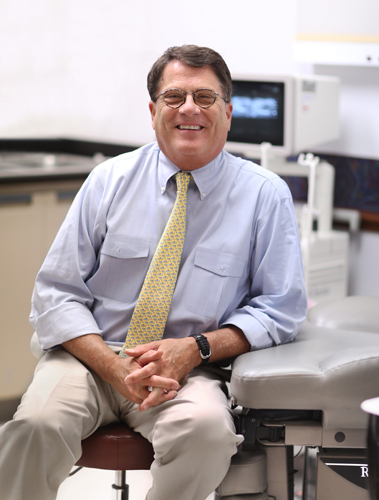Ken, a construction worker from Vero Beach, felt fatigued throughout the day, struggling to keep his eyes open and find motivation. “All I wanted to do was lie down and take a nap,” he said. “I just wanted to be a couch potato.”
It was a dispiriting state to be in for a man, then 50, who liked to work out, work and be outdoors. Now his vim and vigor are back, for which he credits male hormone replacement therapy. It’s a popular remedy for aging men, yet one that studies have raised concerns about.
Recent interest in testosterone therapy has been fueled by many factors, among them the marketing of new topical testosterone formulations for men with “low T” and keen interest by baby boomers who continue to look for ways to remain active.
In January the Food and Drug Administration announced it was reviewing the risks of stroke, heart attack and death in men taking FDA-approved testosterone products because of two studies suggesting an increased danger of heart problems from the therapy.
A January study of 45,000 men suggested testosterone therapy could double the chances of heart attacks in men 65 and older, while a smaller study of 8,700 veterans in November found a 30 percent increase in strokes, heart attacks and death over three years in older men taking testosterone.
The FDA cautioned that it had not concluded those risks were established and said men taking the treatments should not stop them without consulting with their doctors. Its evaluation is continuing.
According to FDA labelling, testosterone replacement should only be used for men whose low levels were caused by a medical condition. Hypogonadism is a condition in which low levels of serum testosterone are found in association with specific signs and symptoms. These also include a depressed mood, reduced muscle mass, bone density and anemia. When it occurs in an older man, the condition is often called andropause.
The condition affects roughly 12 million to 14 million men in the United States; its prevalence increases with age, and it is estimated only 5 percent of affected men currently receive treatment. Men’s average testosterone levels drop by about 1 percent a year starting at roughly age 40, and that correlates to a 1 percent decrease in muscle mass starting at that age.
Testosterone is a hormone produced primarily in the testicles. Testosterone helps maintain men’s bone density, fat distribution, muscle strength and mass, red blood cell production, sex drive and sperm production.
For an adult male, the normal range for testosterone is between 300 and 1,000 nanograms per deciliter. The testosterone level will vary depending on the time of day a man has his blood drawn. Testosterone levels are highest in the morning.
Hormone injections, gels and patches are now being marketed more broadly, even to men who are healthy but going through common conditions of aging.
Both Ken, who preferred his last name not to be used, and his doctor believe hormone therapy was right for him.
“I don’t think there is any harm from hormone replacement therapy if the physician and patient understand the purpose, the end point and understand how to monitor patients,” said Dr. Robin Atwell, Ken’s urologist.
“We shouldn’t pull out the rug away from men who derive benefit from it,” he said. Atwell calls the recent research “bad science” and says it has caused needless worry. “Patients get upset they’ve been taking testosterone the last 10 years, and wonder if maybe that’s why they had the heart attack.”
Ken gives himself weekly injections under Atwell’s care and his monitoring includes blood work every three to six months.
“If you give hormone replacement therapy, you have to watch these people, and make sure they are doing it for the right reason, and they are taking it right,” Atwell said.
Dr. Melissa Dean of the Dean Wellness Institute in Vero Beach also offers hormone replacement therapy for men. Her patients tend to be ages 45 to 75.
She finds it to be a valuable therapy. As far as any “hormone replacement downer,” she said, “as with most things in life, too much of a good thing makes it a bad thing. It can be abused.”
She considers stress to be a contributing factor to natural hormonal decline, and it is often exacerbated by poor nutrition. Among other factors, she looks at the patient’s emotional state and whether he’s been exercising.
Among the potential benefits: more energy, a clearer head, positive mood, better sleep, increased sexual desire and ability and possibly strength gains.
Used clinically since 1937 and approved by the FDA since 1953, testosterone is offered in various forms including patches, gels and injections. U.S. prescriptions for testosterone have increased more than five-fold in recent years, with sales amounting to over $1.6 billion.
Ken had read a lot about “low T” on the Internet and in printed material. ”I didn’t want to just go into some clinic you see advertised in the back of a magazine. You don’t know if they are mixing medications in a bathtub, or if it’s pharmaceutical-grade medicine. I wanted to get quality controlled medicine, have someone monitor my levels and make sure I was doing it right.”
Ken is three years into his regimen and feeling better. “It’s worth it,” he said. “It’s really no different than if you have high blood pressure, high cholesterol (when it’s) really detrimental to your health not to be on medication. I’m putting something in my body that should naturally be there.”
He said he saw no reason to accept what was happening to him “when you can make yourself feel awake and more energetic to do the things you like to do.”
He didn’t like hearing that he should continue the therapy for the rest of his life. But “when your hormones are out of whack, there’s nothing you can do. It’s best to fix it.”

